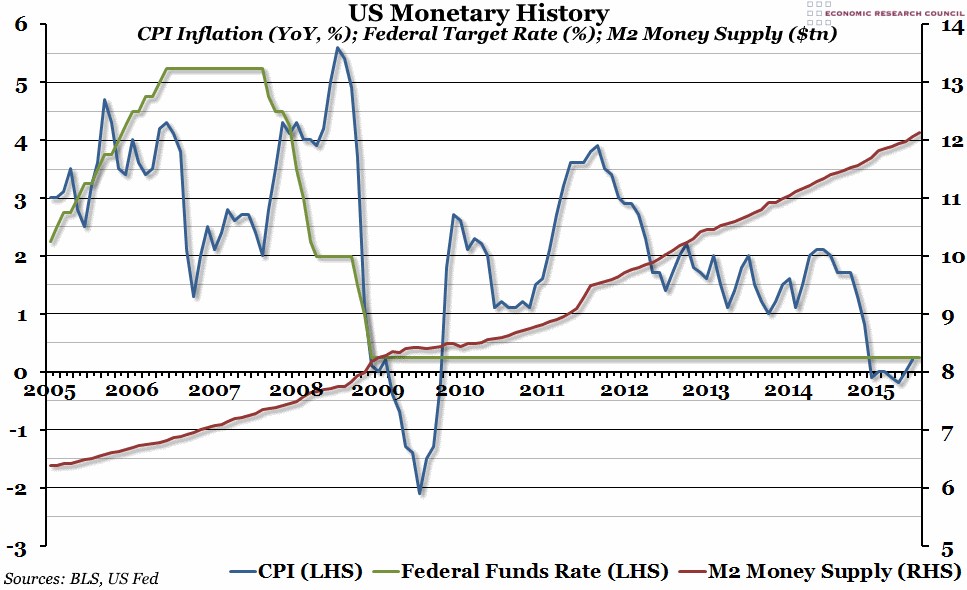Week 37, 2015: US Monetary History
Summary: The US Federal Reserve are meeting today and tomorrow to discuss monetary policy, and whether they will raise the Federal Funds Target Rate which has been at 0%-0.25% since 2009. This is the first meeting in a long time where there is a serious possibility that they might decide to do so. This week's chart takes a look back at the monetary history of the US over the past decade.
What does the chart show? The chart shows three things. The red line represents a measure of the money supply (using the M2 definition, which includes all physical currency in circulation plus most bank and savings deposits) in trillions of dollars, measured against the right hand axis. The blue line shows the annual percentage change in the CPI measure of inflation, measured against the left hand axis. Finally, the green line shows the target rate that the Federal Reserve sets (also measured against the left hand axis).
Why is the chart interesting? It may seem extraordinary that there is serious talk of the US Fed raising their target rate at a time when inflation is at its lowest since the immediate post-crisis period of 2009. However, with the labour market strengthening, there is a fear that wage rises will begin to put pressure on prices over the next one or two years. Combined with the possible effect of commodity prices returning to a more normal level over that period, we could see inflation jump back up quite sharply (at least, that is the fear of central bankers in most advanced economies). Returning to a more normal target rate would also give the Fed more room for manoeuvre when a future crisis hits (beyond the largely ineffectual QE programme, which only caused minor bumps to the M2 measure of the money supply: over the last 10 years M2 has actually increased by a slightly lower proportion (1.86) than the 10 year average since the 1960s (1.98)). However, although there is a real chance that they might increase the target rate this week, the most likely outcome remains that they will delay the decision for another few months.
 Wednesday, September 16, 2015 at 10:40AM |
Wednesday, September 16, 2015 at 10:40AM |  Post a Comment
Post a Comment  Inflation,
Inflation,  Interest Rates,
Interest Rates,  Money Supply
Money Supply




